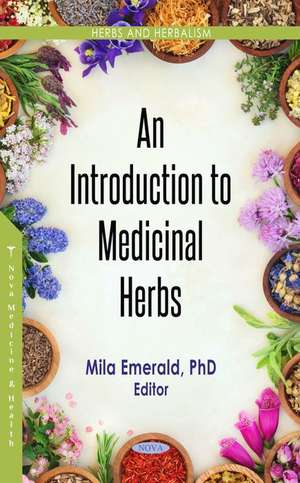An Introduction to Medicinal Herbs
Editat de Mila Emerald PhD, Dr. Sc.en Limba Engleză Hardback – 10 noi 2021
Preț: 1334.73 lei
Preț vechi: 1550.19 lei
-14% Nou
Puncte Express: 2002
Preț estimativ în valută:
255.43€ • 263.88$ • 212.58£
255.43€ • 263.88$ • 212.58£
Carte disponibilă
Livrare economică 04-18 martie
Preluare comenzi: 021 569.72.76
Specificații
ISBN-13: 9781685071479
ISBN-10: 1685071473
Pagini: 365
Dimensiuni: 230 x 157 x 28 mm
Greutate: 0.63 kg
Editura: Nova Science Publishers Inc
Colecția Nova Science Publishers Inc
ISBN-10: 1685071473
Pagini: 365
Dimensiuni: 230 x 157 x 28 mm
Greutate: 0.63 kg
Editura: Nova Science Publishers Inc
Colecția Nova Science Publishers Inc
Cuprins
Preface; A Sustainable Approach for Cultivation of High Valued Herbs; Use and Agroecology Efficiency of Medicinal Plants in Plant Production; Economic Justification Application of Medicinal Plants in Cosmetic and Pharmacy for the Drugs Discovery; Screening Potential for Genotoxic Effect of Medicinal Plants; Culinary Herbs: The Regulator of Gut Microbiome; Medicinal Herbs for Metabolic Disorders; Herbal Remedies in the Treatment of Anxiety Disorders; Mucuna pruriens: A Wonder Herb for Degenerative Disorders; Biology, Biochemistry and Biotechnology of a Critically Endangered Indian Medicinal Herb-Safed Musli (Chlorophytum borivilianum Sant. Et Fernand); Index.
